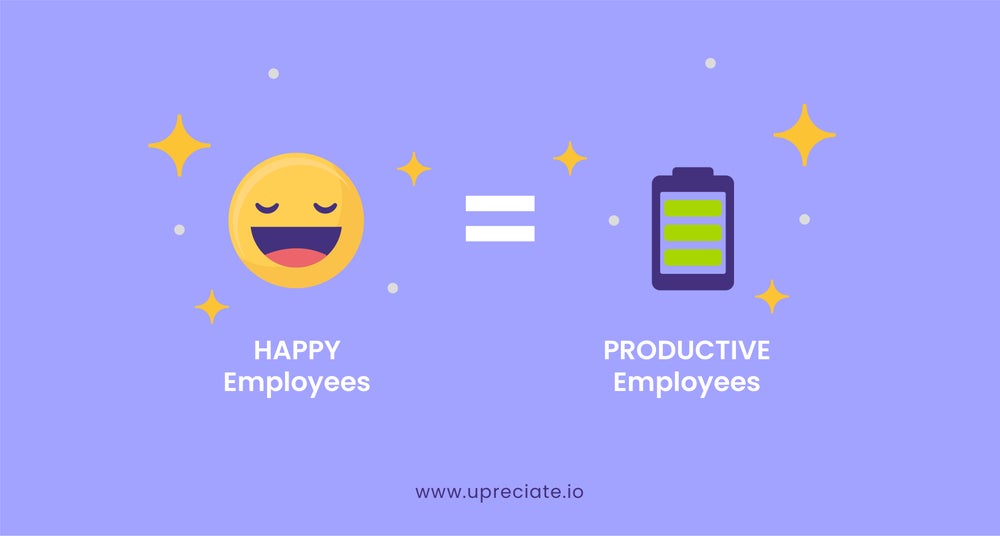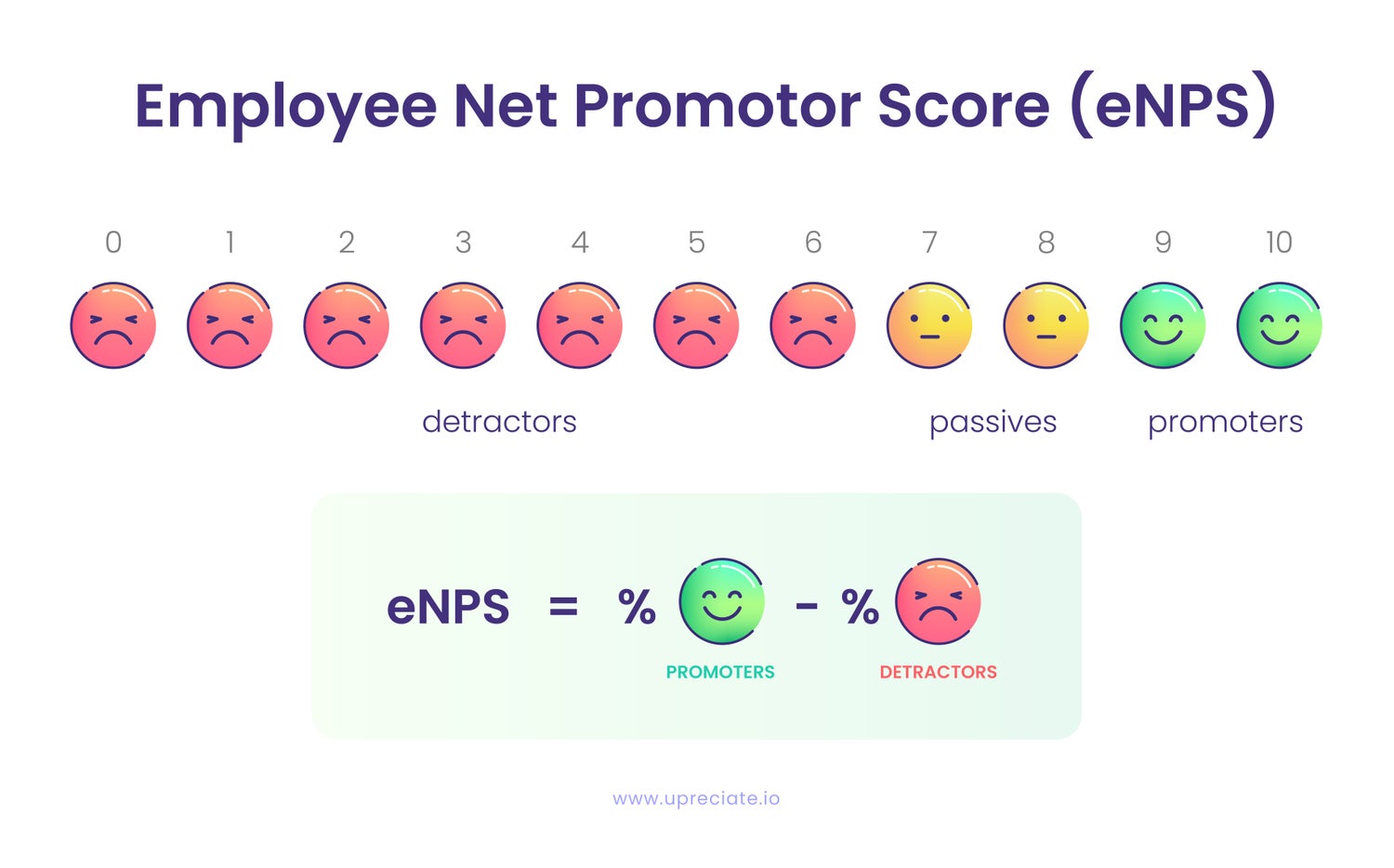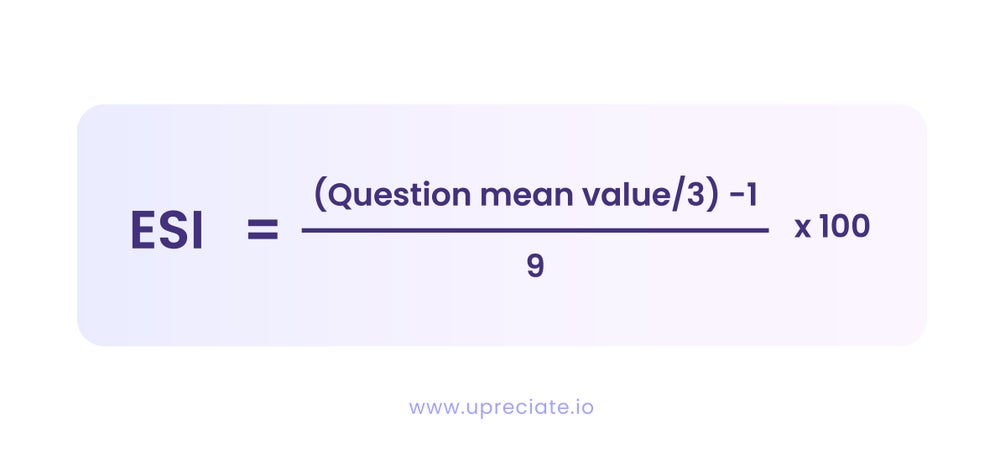
Are your employees happy? Do you have the data to support your answer? If the answer is no, how do you know if your investment in employee satisfaction is paying off?
A study in early 2022 found that nearly 60% of workers feel some negative emotion about their job, with nearly 25% feeling only negative emotions. Employee happiness is so important because it improves not only the business performance but also its profitability.
In the modern business world, competition has increased exponentially. Businesses are implementing unique strategies to improve their efficiency and maintain a competitive edge in the market. Many businesses have come to realize the significance of keeping their employees happy and satisfied.
First things first. To make your employees happy you need to know what employee happiness is and how to measure it. Let’s dive into it.
What is Employee Happiness?
Happiness at Work is truly an umbrella concept that includes other happiness-related concepts (Job Satisfaction, Organizational Commitment, Employee Engagement).
Employee Happiness is having a positive attitude towards work, being willing to solve problems rather than complain, accepting constructive criticism, and constantly striving to do better. Happy employees are always eager to perform their jobs and even go beyond it in terms of their performance. According to Forbes, happy employees are typically up to 20% more productive and efficient than unhappy employees. It has an even greater impact on salespeople because happiness raises sales by around 37%.
So, employee happiness is more important than some people give it credit for.
Why does it matter if your employees are happy in the first place?
Here’s why:
- Higher Employee Retention and lower Employee Turnover: An unhappy employee will likely look for happiness somewhere else.
- Higher Productivity: A happy employee is motivated, more focused and ultimately performs better. Forbes published the results from one study that revealed happy employees are as much as 20% more productive in the workplace than unhappy employees.
- Greater employee engagement: Companies with engaged employees outperform those without by 202%.
- Better Company Culture: Happiness is contagious and the other way around too. Unhappy employees can build a toxic culture over time.
- More Satisfied Customers and a Boost in Sales: Happy employees can help you increase sales, since they account for a third more in sales than unhappy employees.

The Importance of Measuring Employee Happiness
Even though most CEOs and managers may believe their employees are happy, this is not always the case. So, how are you going to find out if your employees are happy or not? Well, this is where the measurement of employee happiness comes in. If you want to check how happy your employees feel, you need to measure it.
If you can't measure it, you can't manage it, said Peter Drucker. And well, if you can’t manage it, you can’t improve it.
9 Strategies to Measure Employee Happiness
Over the years, many techniques to measure employee happiness and satisfaction have emerged. However, it is worth noting that not all suit every business. The type of tool to measure employee happiness depends largely on your work culture, company size, and the type of feedback you are looking for. These are the 9 ways to measure employee happiness:
1. One-on-one meetings in a Safe Environment
Although it looks the simplest way, it’s also the most time consuming. But it is absolutely worthy to perform one-on-one meetings to gather employee feedback because you’ll get the most useful insights. One-on-one meetings offer specific information on what is going wrong and just why employees are not satisfied with their work. After all, it involves directly asking questions and obtaining answers from employees. On top of this one-on-one meetings will also provide you rich insights from body language, that you wouldn’t get on a survey.
First create a safe environment for honest feedback. The person who conducts these interviews should be neutral enough to make employees feel comfortable to share criticism and unpleasant experiences. This is the only way you’ll make sure to gather honest employee feedback. You can bring a script with some topics to facilitate the interview (job expectations, performance and progression, any concerns they may have, what keeps them motivated and if there are any obstacles that keep that from performing their job), but let the interview conduct itself based on what the employee has to share.
Conducting these meetings has a very positive effect on your team because they will feel heard. Salesforce found that when an employee feels heard, they are 4.6 times more likely to feel empowered to perform to the best of their abilities.
2. Track Employee Net Promoter Scores (eNPS)
Employee Net Promoter Score is basically one question to measure loyalty. On a scale of 1 to 10, you ask your employees: How likely are you to recommend your company to others?

These ratings are broken into detractors, passives, and promoters.
- Promoters are your ambassador; they will advocate for your company to friends and family.
- Passives don’t feel very strongly about your company. The challenge is to work on their engagement and turn them into promoters.
- Detractors are very unhappy, and they will very likely hurt employee’s morale with their negativity. Dissatisfied employees can become toxic, contributing to a bad work environment.
Passives and Detractors represent an opportunity to improvement since they probably have opinions about what’s not so good in the company.
Here’s an example on how to calculate the eNPS:

It presents quite a simple and efficient way to measure and track employee happiness. When you compare it to other tools such as surveys, it is more visual and it is also rather simple to create. On one side it is efficient in getting a high response rate because it’s so concise but on the other hand it doesn’t go much deeper. One of the key limitations of this method is that it does not offer specific information about the issues or problems that are contributing to dissatisfaction. It will only give a general idea about what may be wrong with the current processes and procedures. So, it is what is it: a quick and efficient way to collect employee feedback.
A great tip to maximize your response rate is to embed the eNPS scale on the email itself. Email surveys are one of the most effective data collection methods to collect survey data. This way your employees can respond right away instead of having to click.
Now you may ask: What is a good eNPS?
An Employee Net Promoter Score above 20% is ok, above 50% is excellent, and above 80% is world class.
Resources: Use this Microsoft Forms eNPS Template
Resources: Use this eNPS Calculator
3. Track Employee Satisfaction Index (ESI)
Employee Satisfaction Index (ESI) is calculated based on your employees’ answers to the following 3 questions:
- How satisfied are you with your current workplace?
- How well does your current workplace meet your expectations?
- How close is your current workplace to the ideal one?
Contrary to the eNPS, ESI is often used in a survey including more in-depth questions.

4. Measure the Job Descriptive Index (JDI)
The Job Descriptive Index measures employees' satisfaction. It is designed to measure 5 dimensions of job satisfaction: satisfaction with supervision, coworkers, pay, opportunities for promotion, and the work itself. Each of these dimensions is scored to give you insights.

By tracking KPIs like eNPS, ESI and JDI over time, you can understand if you’re going in the right way or if you need to change your strategy.
5. Perform Employee Surveys
A widely used method to measure employee satisfaction is detailed employee surveys because they are easy and quick to set up and to send to employees, especially for big companies.
You can choose to include in these surveys the ESI and eNPS questions. But remember, keep it easy to answer and short enough that employees won’t quit halfway through.
These are some topics you can build your survey around:
- Onboarding
- Company Culture
- Job Satisfaction
- Mentoring
- Career Development
- Training
- Engagement
- Performance
- Work-life Balance
- Benefits
6. Provide an e-Suggestion Box for Anonymous Opinions
As much as you create a safe environment for sharing, people may not feel comfortable giving honest feedback. Let them give you their genuine opinion in an anonymous way. You can do this recuring to the good old Suggestion Box or just do an online version of it: create an ongoing survey with just an open-ended question asking for their feedback on any subject. You can also leave it optional for employees to write their name if they want feedback on their suggestion.
Don’t forget to turn on notifications to send you an email every time there is a new entry on the survey. Later on, when you analyse your data, you can segment the suggestions by topic, but you don’t want to do it on the survey, otherwise you could be limiting the employee to those topics defined by you.
We’ve made things easier for you and built you an e-Suggestion Box Template for you to copy and use it right away:

7. Keep track of KPIs like Absenteeism and Turnover rate
Other than meetings and surveys, there are some KPIs that can serve as employee satisfaction metrics.
Keeping track of absenteeism and turnover rates through time can show signs of employee unhappiness. Also, being late for work or skipping work can mean many things, but if it’s consistent, it may be an indicator of employee dissatisfaction.
If an employee constantly fails to meet the deadlines and doesn’t care about the impact of this tardiness, it’s clearly a sign of job unsatisfaction.
Other metric you can track is your rating on sites like Glassdoor which give you insights on these 6 topics:
- Culture & Values
- Diversity & Inclusion
- Work-Life Balance
- Senior Management
- Compensation and Benefits
- Career Opportunities
The reviews on these sites will also give you qualitative data on your company and will probably have some suggestions to improve.
8. Hold exit interviews
Exit interviews are a fantastic way of gaining insights on employee. Here you should also choose someone neutral to conduct the interview in order to get the most out of the interview. Use the same questions every time to identify patterns but don’t limit your former employee to these if he wants to share other insights. Here are some questions you could do on an exit interview:
- Why are you leaving?
- How was your relationship with your team?
- How was your relationship with your manager?
- Did you feel appreciated and recognized?
- Did you feel heard?
- Was the workload reasonable?
- Did you have the necessary tools to perform your job effectively?
- Did you express your discontent before to your manager? If yes, what have been done?
- Did you feel you had opportunities to learn and grow?
- Did you enjoy your job role?
- What could have been done to encourage you to stay at our company?
9. Run a Daily Mood Check
Use a tool like Upreciate that allows you to collect daily feedback on your employee’s mood in a fun way. Every day they get asked how they are feeling that day and if they don’t feel like answering, they can just skip. But if they do answer you get amazing daily feedback on your company’s state of the art as far as employee satisfaction is concerned.
Setting surveys can be time consuming, but this solution spares you all that since it automatically collects the data on a daily basis without being intrusive.
How Often Should You Measure Employee Satisfaction?
All businesses are different from each other. Therefore, the frequency of employee satisfaction measurement may depend on the culture and the size of the company.
It also depends on the tool you use. For example, you could use eNPS more often than detailed surveys because of the time they demand from your employees and your team too. Even though the measurement of employee satisfaction is very useful, it can be resource-consuming. You will be required to dedicate both your money and your time to perform it.
It is not wise to measure employee satisfaction weekly or monthly, not only because it would be expensive but also because it would present inaccurate and ambiguous results.
You need time to make tweaks to existing strategies and basically perform the whole learning cycle effectively before measuring it again and tracking the effectiveness of your strategies on employee happiness. Only then, you will be able to identify what can be done to increase employee motivation and even employee morale.
- You should measure eNPS quarterly, so once every 3 months.
- One-to-one meetings can be weekly, biweekly, or monthly since they are more time consuming.
- Detailed surveys should be less frequent than eNPS to avoid survey fatigue, so you could make them once or twice a year.
The Impact of Employee Satisfaction on Employee Engagement
Many studies have already been performed to explore the effect of satisfaction on employee engagement. Most studies have concluded that when employees are satisfied, they are more likely to be engaged.
When employees are happy and satisfied with their jobs, they are willing to give that extra mile and they don’t look for other job opportunities. Their satisfaction is further improved when they are offered development opportunities and even the benefits that they deserve. It contributes to the improvement of employee morale. You will notice how easier it will become to get the tasks and projects done.
In such a culture, employees perform exceptionally, and it will have a positive impact on the overall efficiency and performance of the company.
So, what are you waiting for? Improve the morale of your employees confidently and experience the positive results of having your employees happy with their jobs.
There is no doubt that the measuring employee happiness is more than just a little important. It helps you determine how happy your employees are at a given moment and throughout time if you measure it consistently. Keeping track of your employee’s happiness score allows you to spot fluctuations and identify the possible causes for these positive or negative fluctuations. Only then you can tackle this and build action plans to prevent disengaged workforce.
At the same time, it gives you insights if your efforts to improve your company’s culture and making employees happy are working or not. If you do not measure employee happiness, you will be unable to track the progress of your current efforts and if employees are truly happy in the workplace or not.
After reading all these strategies, we hope you find the ones that works for your company. You should use a combination of all these tactics and plan the frequency accordingly.

